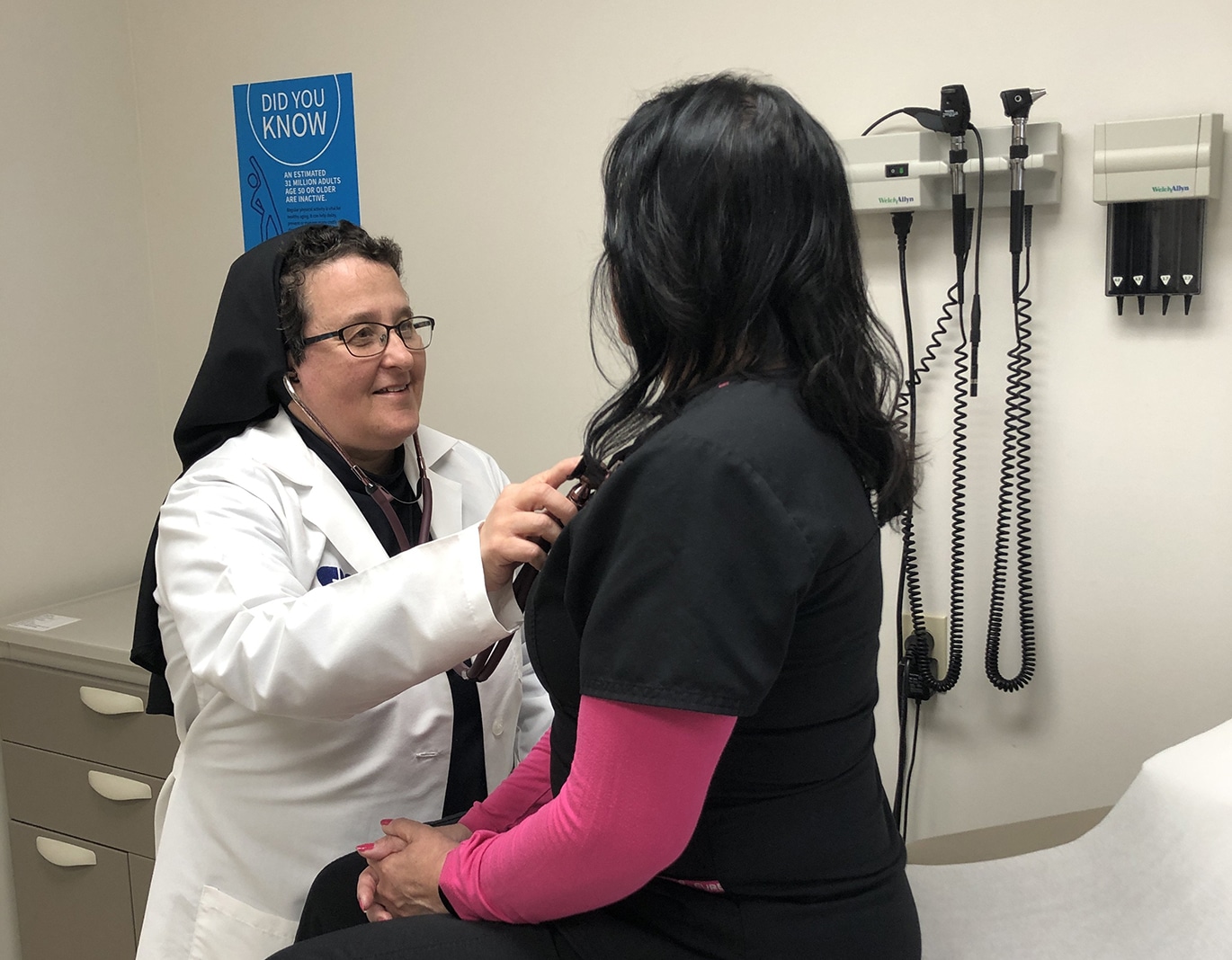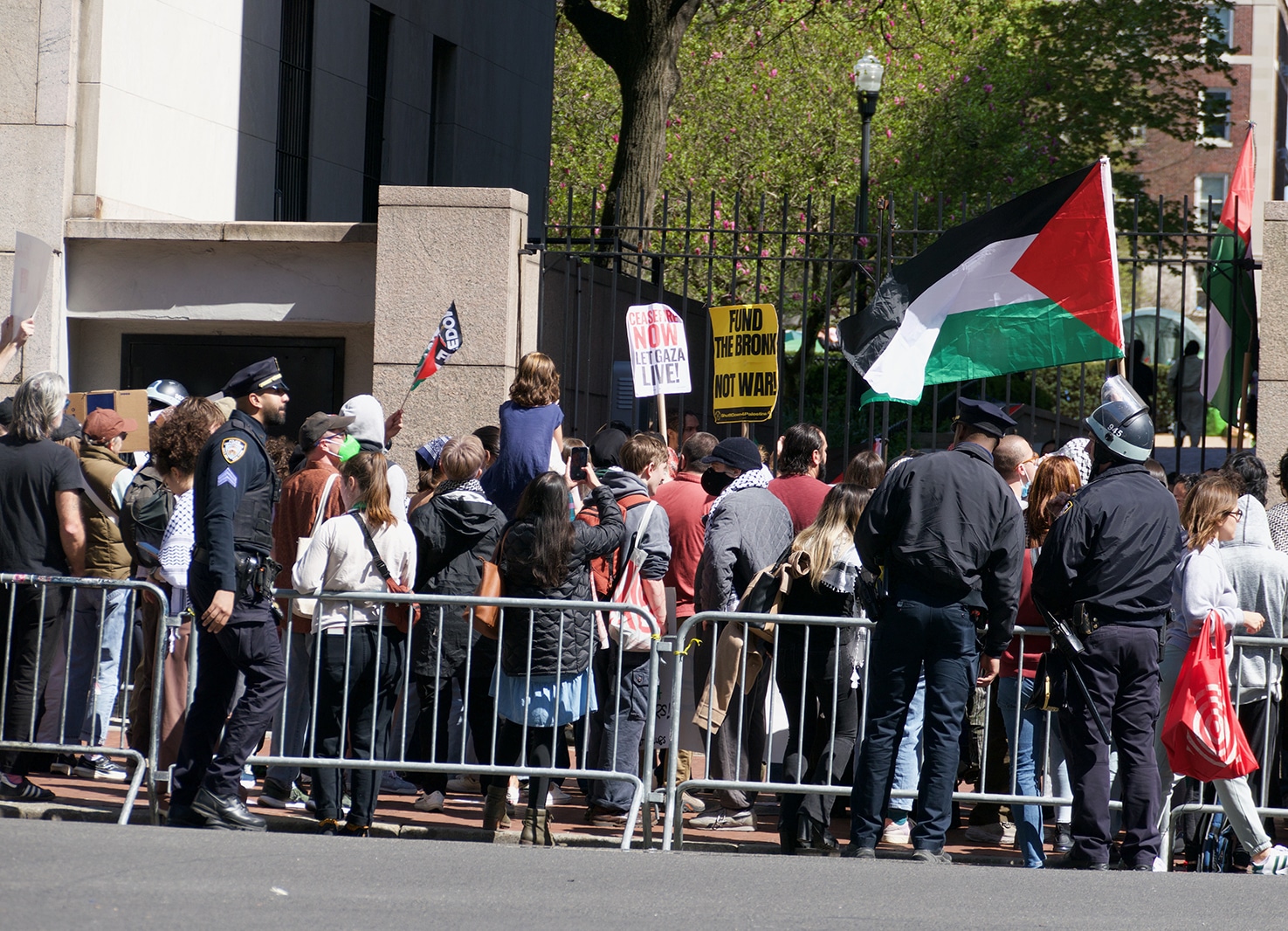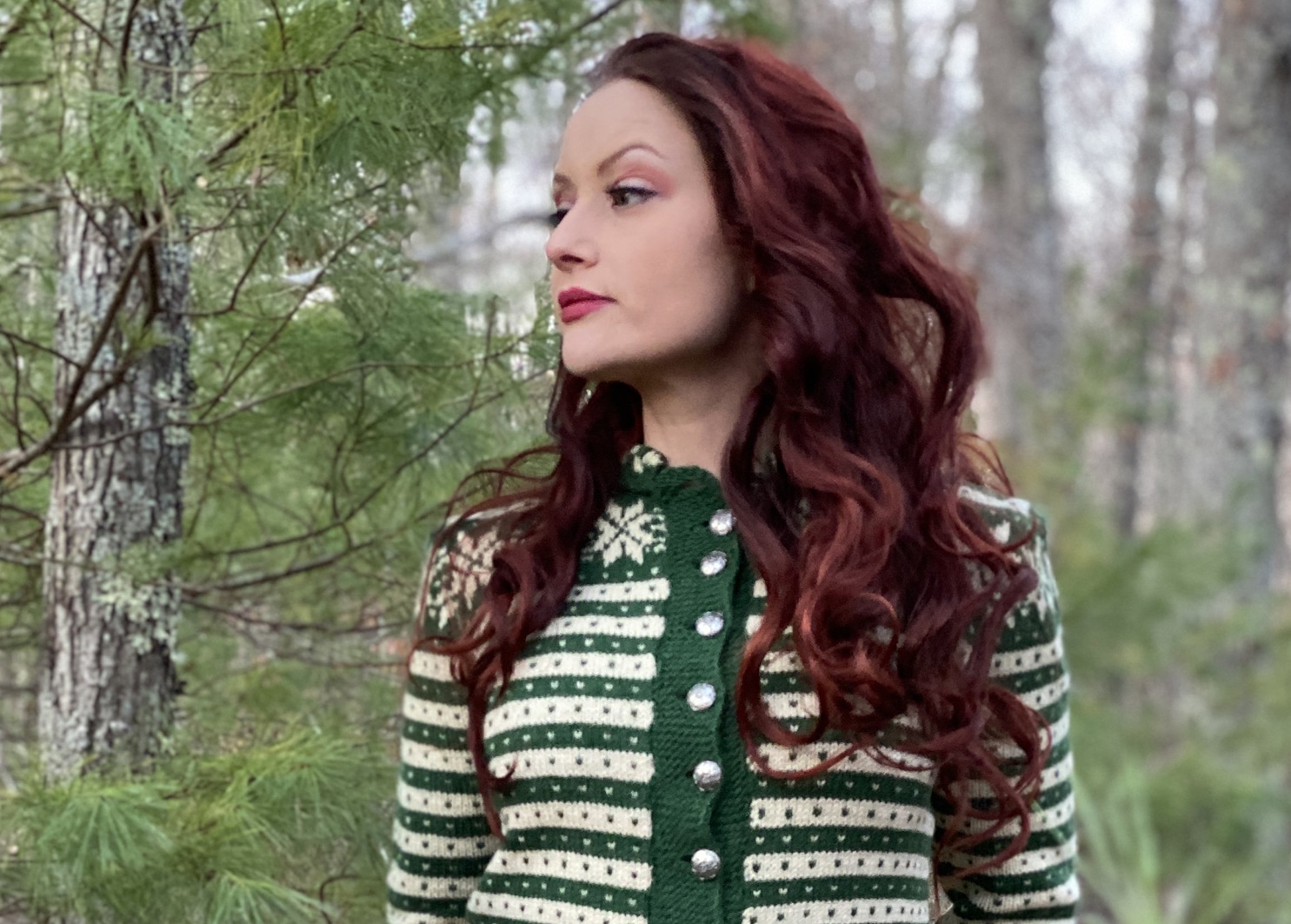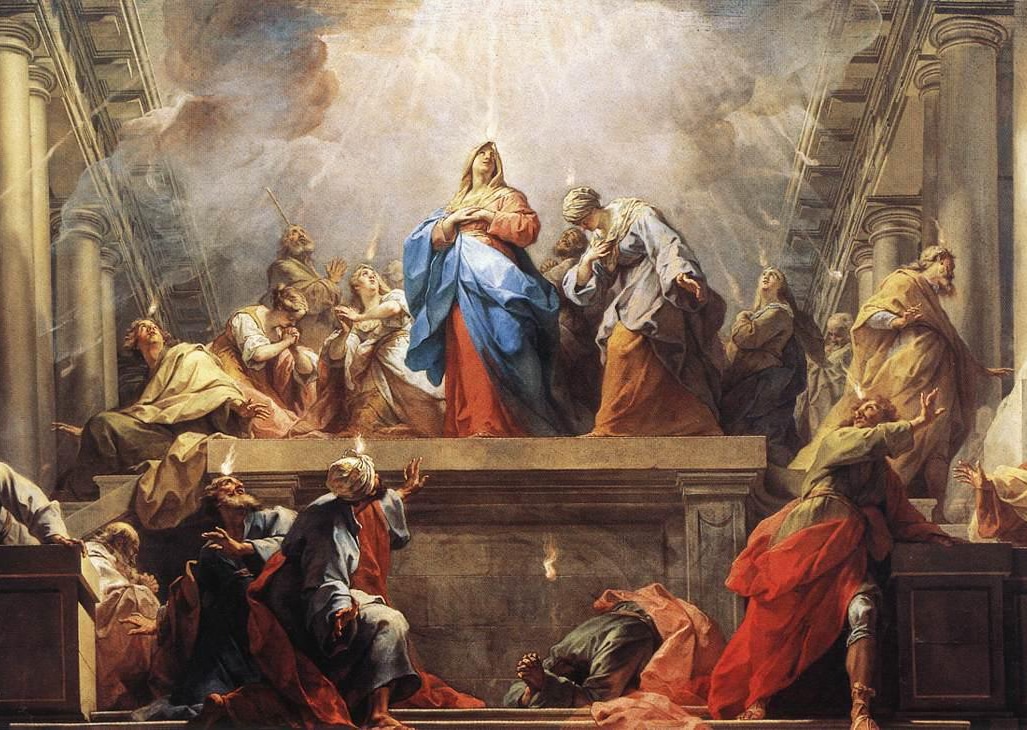These days one often hears the sentiment that being pro-life is at odds with caring for the poor. Kentucky-born physician and Sister of Mercy Sister Mariana Koonce is pro-life and ministers to the poor in her work. She rejects what she calls a false dichotomy between the two, instead seeing the intrinsic dignity of human life in the womb and outside of it. Sister Koonce recently spoke with OSV News’ Charlie Camosy about how the church’s understanding of human dignity informs her holistic approach to health care.
Charlie Camosy: Can you give us some of the details of your personal journey? Practically speaking, how did you end up being both a physician and a Religious Sister of Mercy?
Sister Mariana Koonce: I decided in fourth grade that I wanted to be a physician because I wanted to help people. I thought health care was the best way to do that. Being a goal-directed person, I went to the University of Notre Dame with the intent of studying pre-med. For medical school, I applied for a Navy scholarship because I did not want educational debt to force my future practice choices. I attended Tulane University School of Medicine and then served in the U.S. Navy for seven years. In the Navy, I completed a family medicine internship and residency and served two different shipboard tours as the ship’s physician. After leaving the Navy, I tried several different practice styles, including starting my own practice, but still felt unfulfilled. With the help of my local pastor at that time, I discerned a call to religious life. I joined the Religious Sisters of Mercy of Alma, Michigan, in 2008 and professed final vows in 2016.
Camosy: What sorts of charisms are at the heart of the Religious Sisters of Mercy? How does this overlap with being a health care provider?
Koonce: The Religious Sisters of Mercy were originally founded in Dublin, Ireland, in 1831 by Mother Catherine McAuley. She bequeathed to her sisters a legacy of union and charity as the spiritual fount from which flowed the corporal and spiritual works of mercy. She also provided for a fourth vow of service to the poor, sick and ignorant in addition to the usual religious vows of poverty, chastity and obedience.
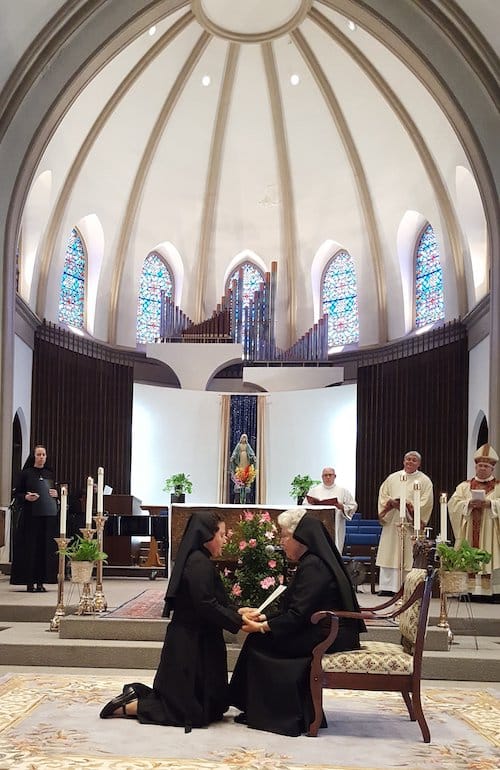
As an independent institute of mercy founded in 1973, the Religious Sisters of Mercy of Alma live Mother Catherine’s legacy through an intense common life of prayer that expresses itself in the external apostolates of health care, education and other works of mercy. Our sisters all receive professional training for their apostolates. For example, our health care apostolates include sisters who are physicians, nurse practitioners, nurses, psychologists and social workers. Through our apostolates, we seek not only to serve the poor, sick and ignorant but also to elevate our colleagues and our professions.
Camosy: You are someone who, as I understand it, brought free health care to the Diocese of Knoxville, and you are very pro-life with respect to abortion and physician-assisted killing. How does your Catholic vision stand up against our secular cultural political imagination that imagines concern for the poor as at odds with pro-life commitments?
Koonce: The Catholic vision of human dignity is rooted in the fact that all persons are created in the image and likeness of God, are endowed with a unique human soul specially created by God, and are intended to share in the divine life eternally. The secular vision of humanity introduces a false dichotomy that values, divides and classifies persons based on extrinsic characteristics. The unwed mother and the baby in her womb, the prisoner on death row and the crime victim, the homeless drug addict and the Alzheimer’s patient in the nursing home all have the same human nature and the same intrinsic dignity. The Catholic recognizes the divine image in each person and seeks to alleviate the suffering of each person in a way that upholds the divine image.
As St. John Paul II wrote in Dives in Misericordia, “mercy is manifested in its true and proper aspect when it restores to value, promotes and draws good from all the forms of evil existing in the world and in man.” In this way, no conflict exists between being pro-poor and pro-life, because all persons have the same intrinsic dignity.
Camosy: You are someone who understands the bioethical vision of the church, but also is deep in the weeds of clinical realities. With this intellectual and practical expertise in mind, what is one shift you’d like to see in how Catholic institutions deliver health care?
Koonce: To answer this question, I would like to redirect the discussion from the level of institutions to the level of persons. After all, institutions are composed of persons. Persons provide health care within institutions. Jesus Christ came to save persons, not institutions, and he did so by assuming to himself a complete human nature, both a human body and a human soul.
For the persons who provide health care, then, I would like them to have a deep understanding of the body-soul unity of the patients they treat. This may sound like an esoteric philosophical point. However, one of my “aha” moments while studying philosophy at the Dominican House of Studies was that I had been practicing medicine as a functional substance dualist my whole life. In other words, I believed in God, the soul and eternal life, but I did not think we could know much about these realities. So I focused on knowing as much as possible about the human body.
However, the human patient is a body-soul unity. The philosophical term is hylomorphic composite. Physicians do not just treat bodies. We treat persons, who are composites of body and soul. The soul is manifested through and acts through the body. Functional substance dualism is at the root of most of the misunderstandings about the church’s teachings regarding medical ethics.
Functional substance dualism allows us to separate our professional life from the moral life. Because we think the eternal soul is separate and distinct from the body, we think we can do whatever we want to the human body without impacting the eternal salvation of the patient or ourselves. Many Christian physicians unwittingly practice with a dualist mentality.
When Christian physicians learn to think hylomorphically, however, we are truly holistic health care providers, understanding the human person as a complete human nature. We see the good act as perfecting that nature and the harmful act as degrading that nature. We see the good that medicine can accomplish as being only one aspect of human flourishing. We then realize that our professional acts matter, for our own salvation and for the salvation of our patients. Hylomorphic thinking supports authentic mercy.

